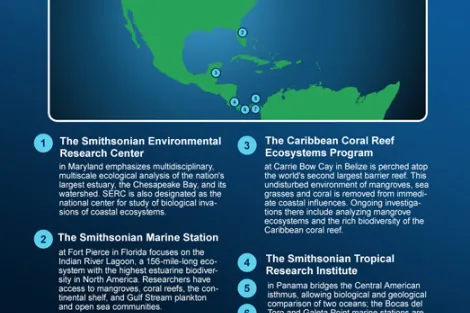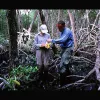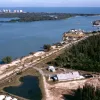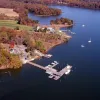These Smithsonian field stations enable scientists worldwide to conduct long-term studies on mangrove ecosystems from a range of latitudes. More about mangroves can be found in our Mangroves featured story.
Slideshow: Smithsonian Research Stations
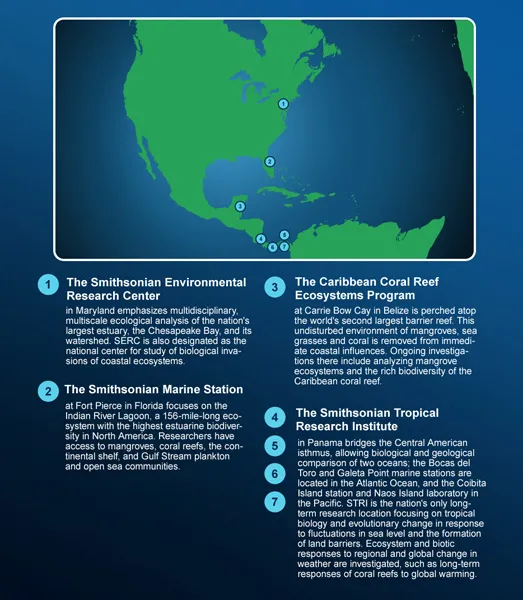
Description of Smithsonian Field Stations
Credit: Smithsonian Institution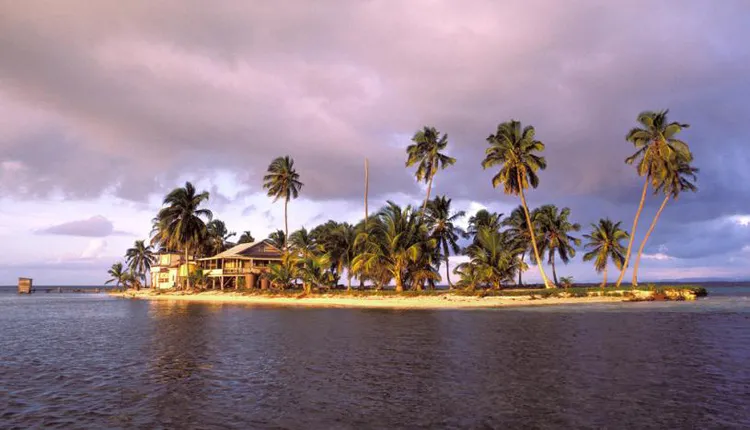
Sunset at Carrie Bow Cay
Credit: Chip Clark/Smithsonian InstitutionThe sun sets over the Smithsonian’s Marine Field Station at Carrie Bow Cay, Belize.
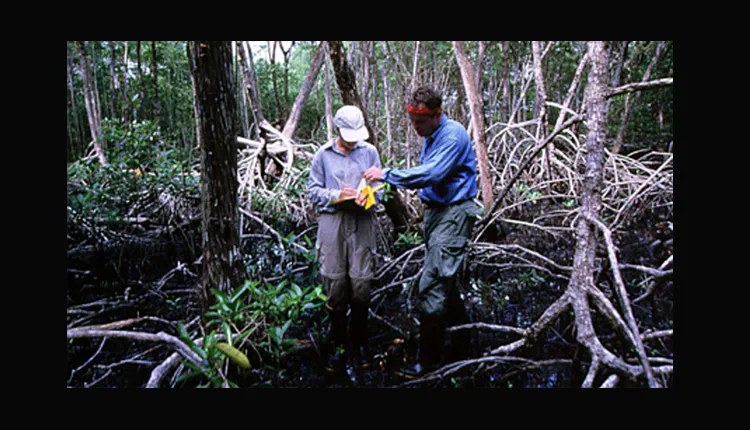
Field Research in Panama
Credit: Marcos Guerra/Smithsonian Tropical Research InstituteAt the Smithsonian Tropical Research Institute in Panama, Dr. Wayne Sousa (right) studies how gaps in the canopy caused by lightning help mangrove forests regenerate. More about mangroves can be found in our Mangroves featured story.
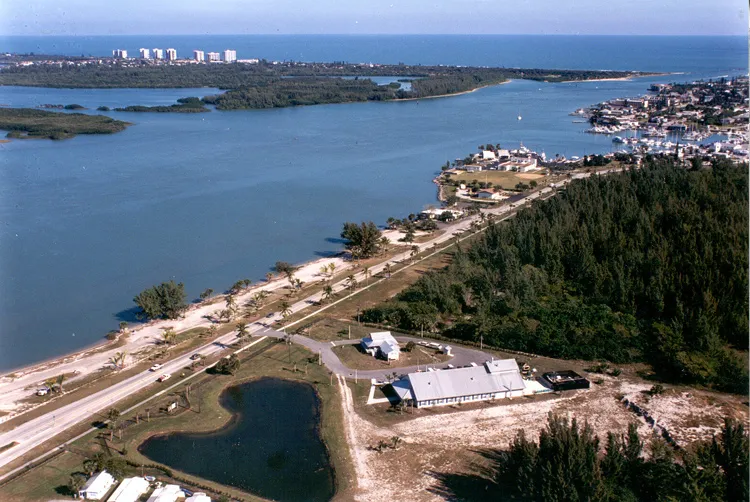
Smithsonian Marine Station
Credit: Smithsonian InstitutionIn Fort Pierce, Florida, researchers at the Smithsonian Marine Station focus on mangroves and other marine ecosystems of Florida. More about mangroves can be found in our Mangroves featured story.
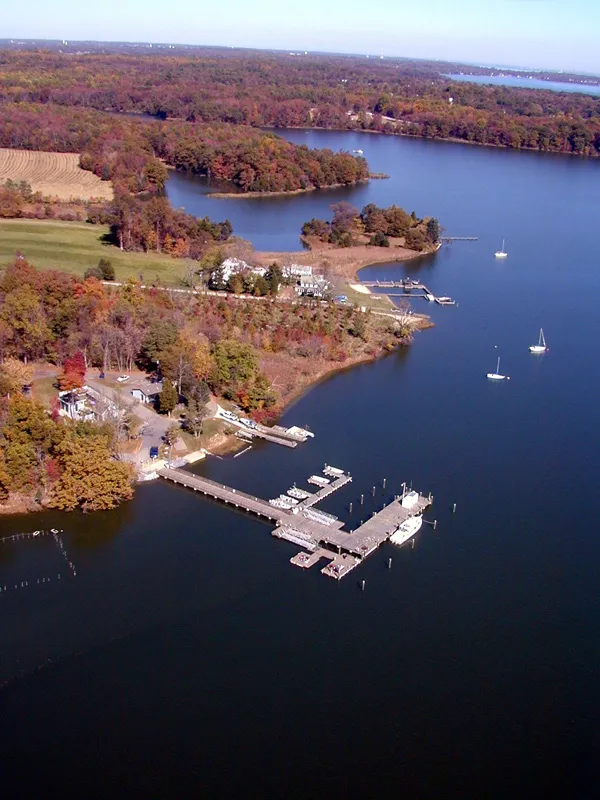
Smithsonian Environmental Research Center
Credit: Smithsonian InstitutionIn Edgewater, Maryland, scientists at the Smithsonian Environmental Research Center examine the influences of climate change, excess nutrients, and surrounding habitats on mangroves. They have also established additional study sites in mangrove forests in Brazil, Australia, New Zealand, and Saudi Arabia. More about mangroves can be found in our Mangroves featured story.


